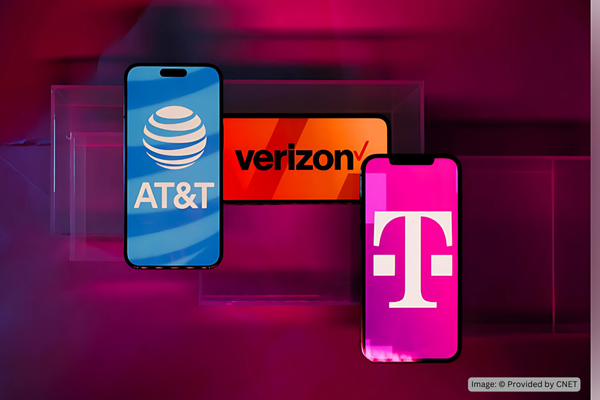Switching Phone Carriers in 2025: What to Know Before Changing Wireless Providers

Changing your wireless provider can feel like a daunting task. With three major networks in the US—AT&T, T-Mobile, and Verizon—and a ton of other carriers and plans out there, it’s easy to feel overwhelmed, especially if your current provider has just hiked your rates. Don’t worry, though! We’re here to help make this process a little easier. Here’s a friendly guide on how to pick the right cell phone plan in 2025.
Discover the Best Unlimited Data Plans for 2025:Check out Cnet for the scoop!
In the US, you have the big three: AT&T, T-Mobile, and Verizon. Each of these companies has its own services and impressive coverage across the country, giving you access to both fast 4G LTE and super-fast 5G data. The most important thing when selecting a network is to find one that works well in your area. That means we can’t give a one-size-fits-all recommendation—T-Mobile might be perfect in bustling New York City, but if you’re in more rural Iowa, Verizon could be your best bet.
The good news? These carriers are always working hard to improve their services, especially with the growing 5G networks. If you’ve switched teams in the past because of spotty coverage, now might be a great time to take another look; many companies have beefed up their offerings thanks to healthy competition for your business!
Finding the Right Carrier and Exploring Trial Programs
If you’re trying to find a new carrier, it’s a great idea to talk to friends or family in your area and get their feedback. You could also pop into a nearby carrier’s store to see if they have any trial programs. For example, T-Mobile offers a Network Pass for a three-month free trial, while Verizon has a 30-day trial, and AT&T has a new 30-day eSIM trial for you to test their networks before making a commitment.
Now let’s dive into the plans! Below, we’ve put together a handy comparison of some current options from AT&T, T-Mobile, and Verizon. We focused on each carrier’s cheapest plan and included a mid-range option that could be a good fit for most folks. Fun fact: T-Mobile’s Go5G plan comes with perks like Netflix, while Verizon offers packages that include Disney+, ESPN+, and Hulu for just an extra $10 a month if you’re on one of their latest unlimited plans!
Family Plans and Smaller Carrier Alternatives
What’s super convenient is that most of Verizon’s and AT&T’s unlimited plans (with a few exceptions) allow you to mix and match options for family plans. So, if one line needs more hotspot data, you can keep it on a higher plan while the others stick with lower-cost options to save some cash. If T-Mobile is your go-to for multiple lines, look into their regular Essentials or Essentials Saver plans, which are currently available for just $100 per month for four lines!
While the big three networks operate the major services, several smaller providers use their networks. You have things like Visible under Verizon, Cricket under AT&T, and Metro and Mint Mobile via T-Mobile—each using its parent carrier’s network to provide service.
Some smaller companies also tap into the larger networks. For example, Google Fi uses T-Mobile’s network, while cable companies like Comcast and Spectrum depend on Verizon for their Xfinity Mobile and Spectrum Mobile services. Boost Mobile operates with a mix of T-Mobile and AT&T as it builds its own 5G network.

Image: © Provided by CNET
Affordable Alternatives with MVNOs: Access Big Networks for Less
The beauty of these smaller providers, often called mobile virtual network operators (MVNOs), is that they can offer access to bigger networks at a more wallet-friendly price. If Verizon has the best coverage in your area but is a little pricey, consider switching to Visible, Spectrum Mobile, or Xfinity Mobile to maintain similar service at a better rate. Just keep in mind you might miss out on some of the extras, like free streaming options.
We’ve summarized some of these providers for you, highlighting which networks they use and what you might want to weigh in your decision.
Goodbye to Long-Term Contracts!
Two-year contracts are mostly a thing of the past in the US wireless market, with many companies now leaning toward longer installment plans. AT&T and Verizon typically provide 36-month plans for the latest devices from top brands like Apple and Samsung. T-Mobile still offers 24-month installment options with its Go5G Plus plan, plus you can snag upgrade deals every two years with Go5G Next to keep up with exciting new releases each year.
While these longer plans let you snag that flagship phone at a lower upfront cost, they do require a commitment to stay on that carrier (and likely on a pricier unlimited plan) for two to three years. If you decide to switch before your contract wraps up, be aware that you could face early termination fees or owe a balance on your device.
With this info in hand, you’re better equipped to make a smart choice about your next wireless provider! Happy hunting!
